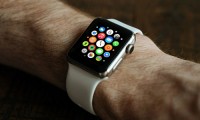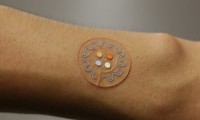-
IoT devices vulnerable to Spectre and Meltdown exploitation
- Source: Healthcare IT News
- 718
- January 23, 2018
-
The Top 8 Technologies Combating Food Allergy
- Source: Medical Futurist
- 1,145
- January 22, 2018
-
AI funding tops $1 billion mark as mobile investments wane
- Source: Healthcare IT News
- 976
- January 19, 2018
-
FDA approves algorithm that predicts sudden patient deaths to help prevent them
- Source: Digital Trends
- 652
- January 16, 2018
-
The Quantified Self, Our Wearable Future
- Source: Digital Salutem
- 1,453
- January 5, 2018
-
4 Ways to Reduce EHR Use-Related Patient Safety Threats Widespread EHR use increases the potential for patient safety risks to occur, so providers must prepare accordingly.
- Source: Xtelligent Media
- 750
- January 5, 2018
-
How to Keep Health Data Safe in the Age of Disruptive Technologies
- Source: HealthTech Magazine
- 813
- January 4, 2018
-
In boost to Abbott, spinal-cord implants emerge as alternative to pills
- Source: Crain's Chicago Business
- 729
- January 4, 2018
-
Scientists Unveil the First Portable Bionic Hand With a Sense of Touch
- Source: Futurism
- 752
- January 4, 2018
-
The Most Surprising Wearable Trend 2017
- Source: digitalsalutem
- 899
- January 3, 2018
your submission has already been received.
OK
Subscribe
Please enter a valid Email address!
Submit
The most relevant industry news & insight will be sent to you every two weeks.













